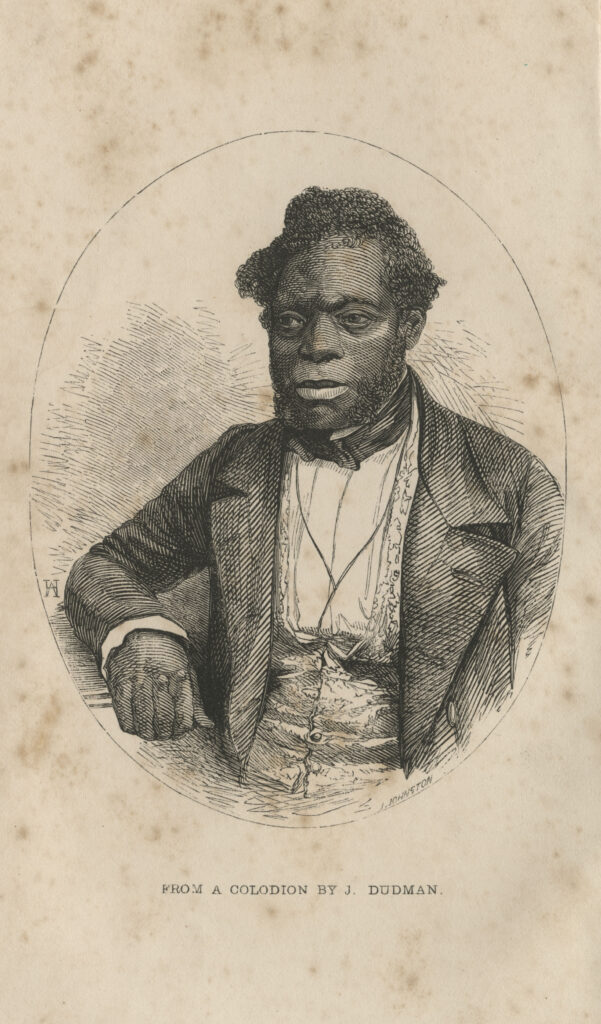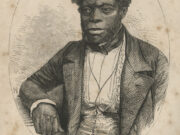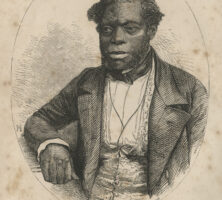A fugitive from slavery in Georgia, John Brown provided one of the few book-length testimonials of what it was like to be enslaved in the Deep South. “Fed” (his first enslaved name) was born in eastern Virginia around 1810, and about ten years later he and his mother were moved to a nearby tobacco farm in North Carolina.

Soon he was separated from his mother and sold south to Georgia. He grew to manhood doing hard labor on Thomas Stevens’s flourishing cotton farm near Milledgeville. Brown befriended an older enslaved person named John Glasgow, who had been a free Black in the British merchant marine and had lived in England. Increasingly angry at his harsh enslaver, Brown came to see England as his only refuge. He made several attempts to escape, but each time he was brought back and severely beaten.
Stevens prospered and in the late 1820s moved north to Decatur, then west into an area recently evacuated by the Cherokees. When Stevens died in 1839, Fed (or “Fred” as he was cited in the will) became the property of his son, Decature Stevens, who was harsher and more erratic than his father had been. Brown ran away again and finally made it to New Orleans, Louisiana, where he was put back into slavery and sold to Theodoric J. James, a hard-driving planter in Mississippi.
Now called Benford, Brown soon took off again. Still illiterate but much more knowledgeable, he followed the Mississippi River north into free country. He traveled mostly at night, receiving some help from Blacks and whites, but mainly using his own wits. He assumed the free name of John Brown, worked for a year as a carpenter in a free Black community in Marshall, Michigan, and then worked for another year and a half with English miners in the northwestern part of the state. He moved on to the Dawn Institute, a refuge for fugitives from slavery near Dresden in Ontario, Canada. Finally, in August 1850 he sailed for England.
Brown settled in London, working as a carpenter, and contacted the British and Foreign Anti-Slavery Society. He lectured to sympathetic audiences on his hard life in bondage and the tragic enslavement of British seaman John Glasgow. He also dictated his memoirs to the society’s secretary, Louis Alexis Chamerovzow. Published in proper English in 1855, Slave Life in Georgia: A Narrative of the Life, Sufferings, and Escape of John Brown, a Fugitive Slave, Now in England came late in the abolition crusade and drew little attention in America. Yet it remains one of the few authentic fugitive slave narratives from the Deep South. Brown stayed in London, married a local woman, and earned a modest living as an herb doctor. He remained free, never to return to America, and died in 1876.






